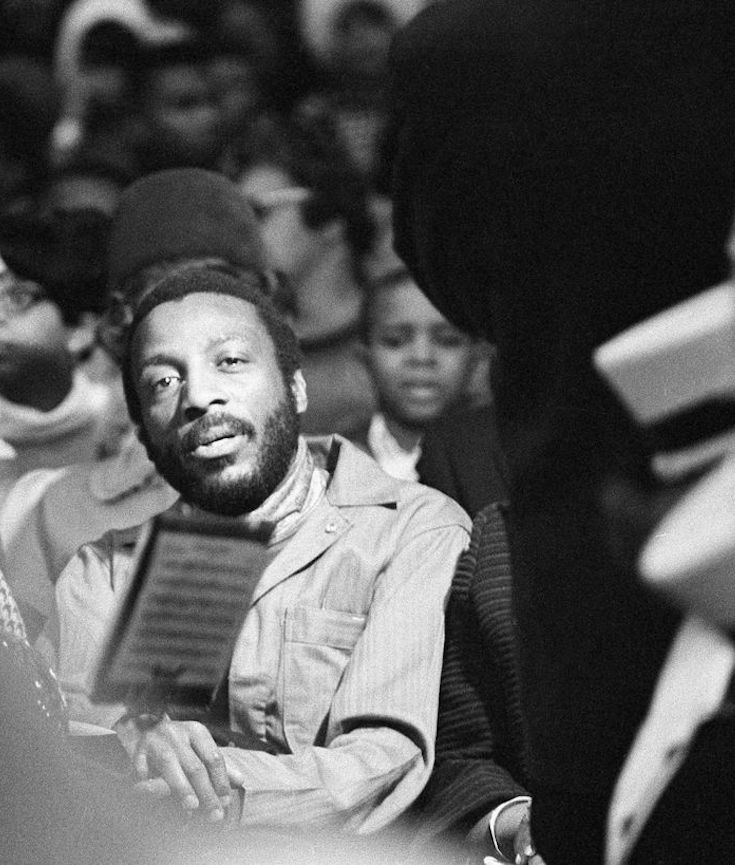[dropcap]Mr.[/dropcap] Gregory’s son Christian Gregory, who announced his death on social media, said more details would be released in the coming days. Mr. Gregory had been admitted to a hospital on Aug. 12, his son said in an earlier Facebook post.
Early in his career Mr. Gregory insisted in interviews that his first order of business onstage was to get laughs, not to change how white America treated Negroes (the accepted word for African-Americans at the time). “Humor can no more find the solution to race problems than it can cure cancer,” he said. Nonetheless, as the civil rights movement was kicking into high gear, whites who caught his club act or listened to his routines on records came away with a deeper feel for the nation’s shameful racial history.
Mr. Gregory was a breakthrough performer in his appeal to whites — a crossover star, in contrast to veteran black comedians like Redd Foxx, Moms Mabley and Slappy White, whose earthy, pungent humor was mainly confined to black clubs on the so-called chitlin circuit.
Though he clearly seethed over the repression of blacks, he resorted to neither scoldings nor lectures when playing big-time rooms like the hungry i in San Francisco or the Village Gate in New York. Rather, he won audiences over with wry observations about the country’s racial chasm.
[mc4wp_form id=”6042″]
 Courtesy of the Gregory Family | Photo Credit
Courtesy of the Gregory Family | Photo Credit
 SIU Photo Service (1956) | Photo Credit
SIU Photo Service (1956) | Photo Credit

 Charles Knoblock / Associated Press (1963) | Photo Credit
Charles Knoblock / Associated Press (1963) | Photo Credit
 AP Photo/Staff (1963) | Photo Credit
AP Photo/Staff (1963) | Photo Credit

 AP Photo/Charles Harrity (1968) | Photo Credit
AP Photo/Charles Harrity (1968) | Photo Credit
 Anthony Barboza/Getty Images (1969) | Photo Credit
Anthony Barboza/Getty Images (1969) | Photo Credit

 AP Photo/Charles Harrity (1968) | Photo Credit
AP Photo/Charles Harrity (1968) | Photo Credit
 Associated Press (1968) | Photo Credit
Associated Press (1968) | Photo Credit
 AP Photo/Carlos Rene Perez (1975) | Photo Credit
AP Photo/Carlos Rene Perez (1975) | Photo Credit
 AP Photo/Marty Lederhandler (1984) | Photo Credit
AP Photo/Marty Lederhandler (1984) | Photo Credit
 AP Photo/Ric Feld (1985) | Photo Credit
AP Photo/Ric Feld (1985) | Photo Credit

PEACE AND FREEDOM PARTY | POLITICAL PARTY, U.S.
The Peace and Freedom Party grew out of the Civil Rights and anti-war movements of the mid 1960’s. Unhappiness with the Democratic Party’s support for the war in Vietnam and the Democrats’ failure to effectively support the civil rights movement was a major factor in the decision to build a new party.
In 1966, three people ran for the U.S. House of Representatives under the Peace and Freedom Party banner. Herbert Aptheker received 3,562 votes in New York state’s 12th Congressional District; Robert B. Shaw received 1,974 votes in Washington state’s 7th Congressional District; and Frank L. Patterson received 1,105 votes in Washington state’s 2nd Congressional District. Late 1966 began a number of voter registration drives in various states with the intent to build a national party. Most notably in the San Francisco Bay Area and in Los Angeles county activists became deputy registrars of voters as peace organizers, anti-war veterans, and civil rights workers like Mario Savio took note of the founding of the Black Panther Party’s founding in Oakland, California in October 1966.
The party achieved ballot status in California in January 1968 by registering over 103,000 voters under its banner. It later got ballot status in 13 other states, but in all of those, the election laws and small organization meant that most were unable to retain ballot status after 1968.
The PFP’s first national convention to nominate candidates for President and Vice President was held in Ann Arbor, Michigan on August 17-August 18, 1968. Eldridge Cleaver was nominated for President over Richard C. “Dick” Gregory by a margin of 161.5 to 54. Cleaver, a convicted felon and Black Panther spokesman, was technically not eligible to run, since he would not yet be 35 by the time of the inauguration in January 1969. Due to the needs of the state parties to collect signatures, the party fielded several vice presidential nominees, including Chicago activist Peggy Terry, activist Rodolfo “Corky” Gonzales, radical economist Doug Dowd, and Judith Mage, who had been nominated at the national convention. Cleaver personally preferred Yippie leader Jerry Rubin. Gregory appeared on the ballot in several states as the Peace and Freedom Party candidate as well as in New York and New Jersey as the candidate of the Freedom and Peace Party. Two states (California and Utah) refused to list Cleaver on the ballot, although each state listed the Presidential Electors and candidates for Vice President (Peggy Terry in California and Corky Gonzales in Utah). (Wikipedia).


You must be logged in to post a comment.